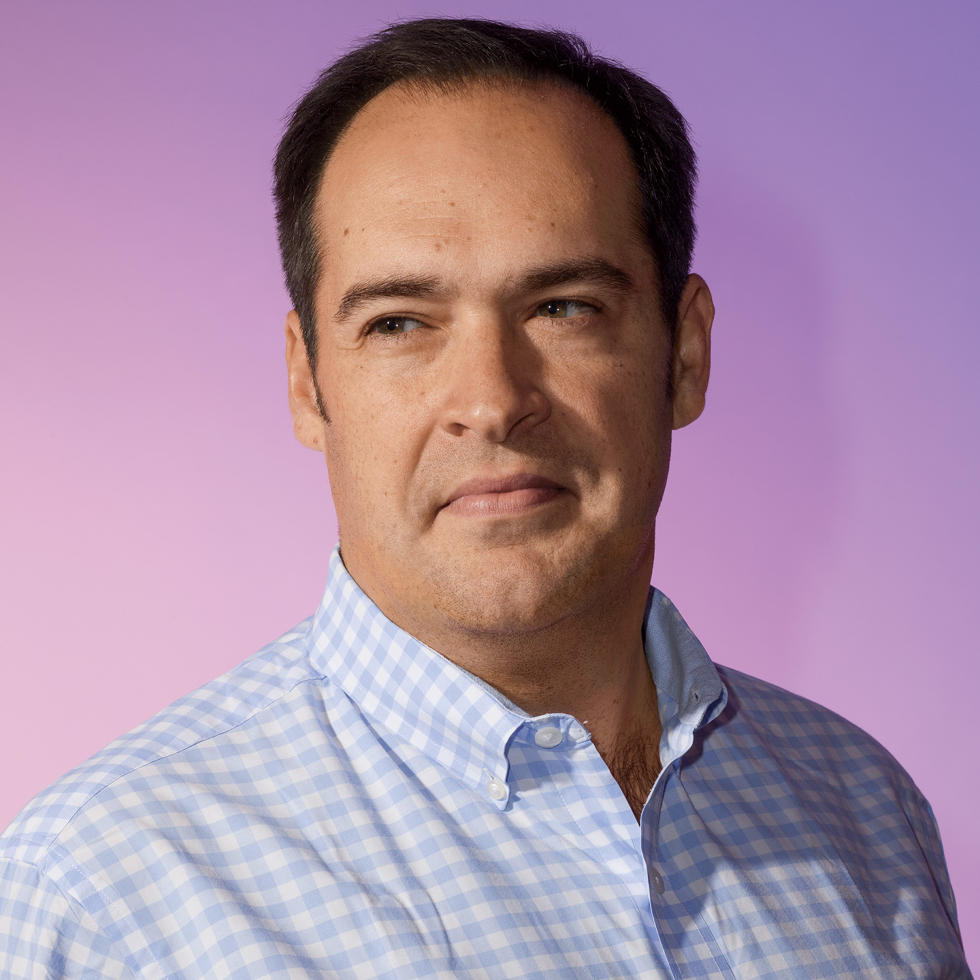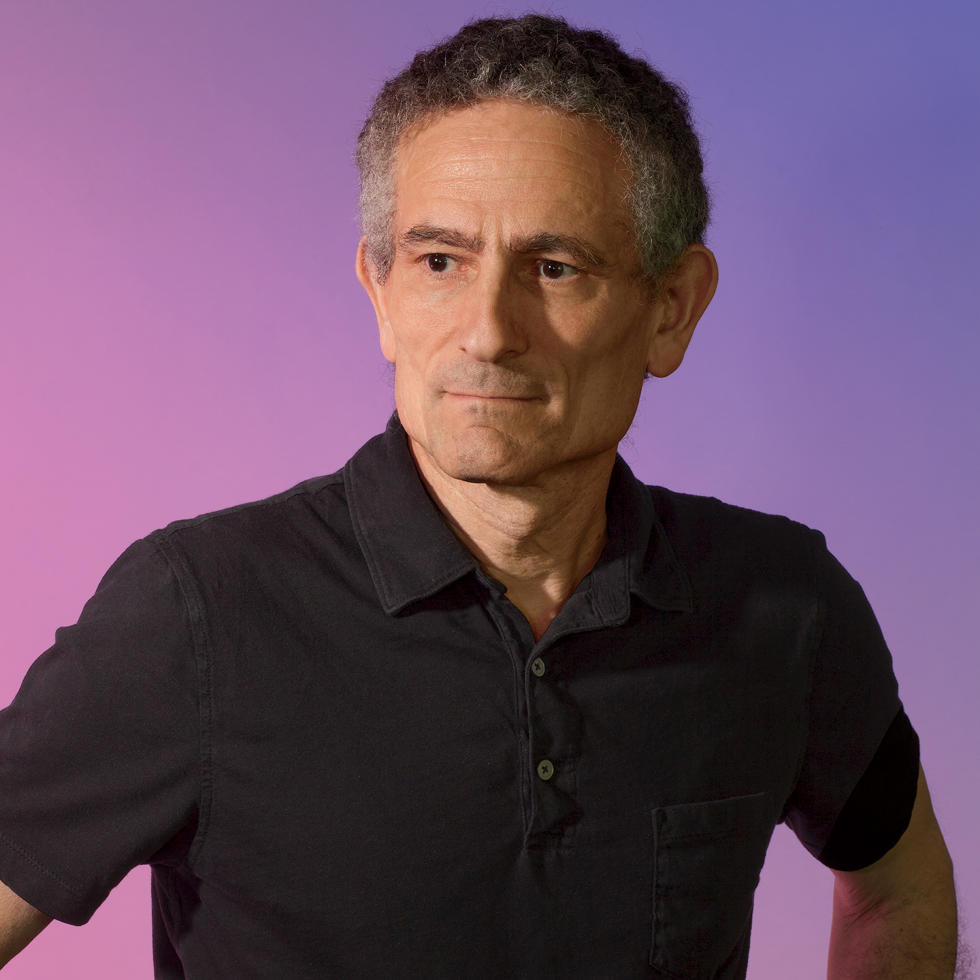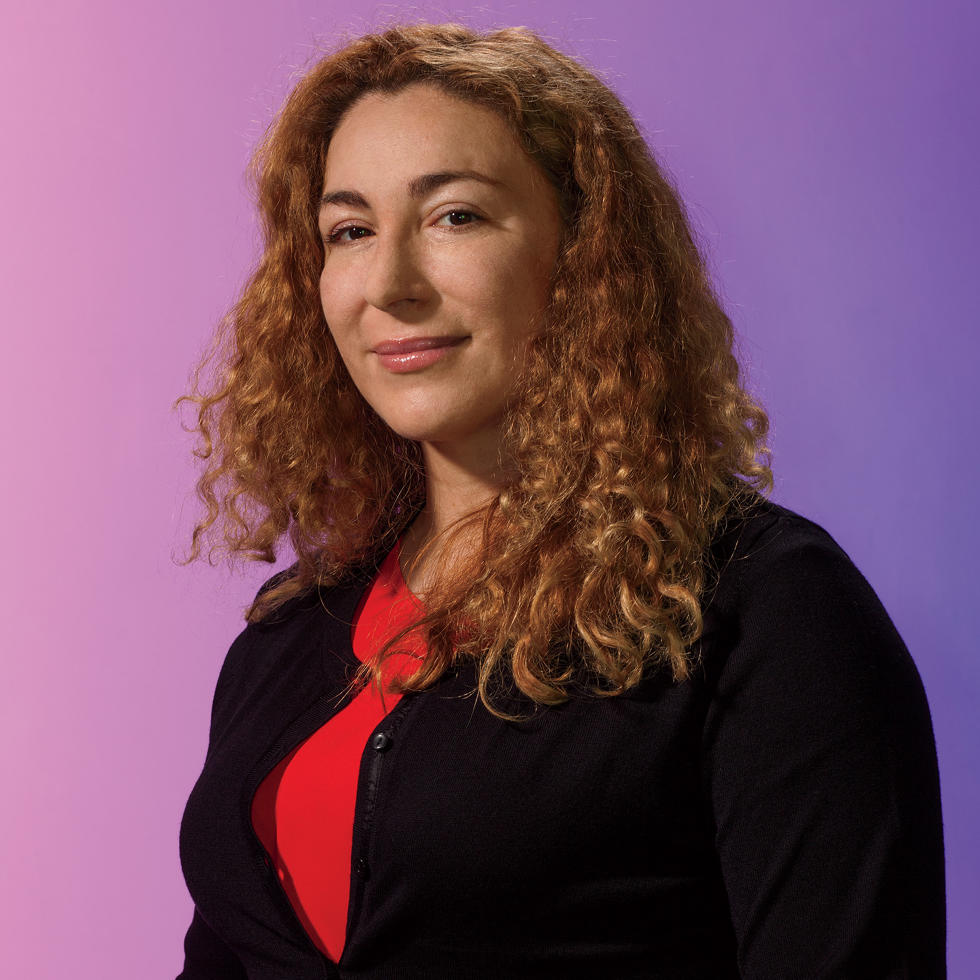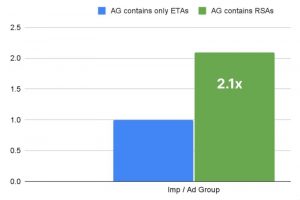Startups are harnessing the trillions of bacteria inside us to eradicate diabetes, obesity, arthritis, and more.
The epicenter of the U.S. biotechnology business is just north of San Francisco International Airport, on a few dozen isolated acres wedged between U.S. 101 and San Francisco Bay. Unless there’s a good reason to visit one of the companies here—Genentech, for instance, or Amgen—you might write off the neighborhood as an especially dull office park. There are no upscale stores or open-air cafés; no Uber drivers circling around; no hoodie-clad twentysomethings hauling day packs. Here, one quiet avenue leads to another, lined with sleek glass buildings that get buzzed by low-flying jets and rattled by breezes whipping off the bay. But within a quarter-mile radius, hundreds of the world’s leading scientists are pushing the envelope of medicine, vying to create novel cures for disease. Some of them, in fact, work beyond the vanguard—in areas of drug development so new they don’t yet have a proper name.
Second Genome, a small outfit staffed by a dozen people just a few blocks away from Genentech’s lab, is one of the boldest. The four-year-old company focuses on the microbiome: the trillions of bacteria, viruses, and fungi that people carry around with them from birth until death. All told, our microbiomes weigh between 1 and 3 pounds and are distributed among different areas of our bodies. There’s a bacterial community living on your skin, another around your groin, and another in your mouth. The ecosystem that lives in your gut, though, is the largest and most complex—”one that is pervasive and profound in its connection to human health,” Peter DiLaura, Second Genome’s CEO, tells me when I visit. Everyone’s microbiome is different—and constantly changing in its bacterial compositions and concentrations.
DiLaura spends most of his days among data scientists and microbiologists, in an office space split between a large area for desk work and a lab cluttered with sophisticated gene-sequencing machines that cost upwards of $100,000 each. Genial, wonky, and exacting with words, he doesn’t come across as someone inclined to boast about the wonders of the microbiome for the sake of marketing. And yet his startup works in a fledgling industry where hype is the common currency. The steadily growing global probiotics industry—encompassing yogurt and other foods, beverages, and supplements—now takes in nearly $30 billion annually and has attracted the interest of large industrial companies such as Group Danone, Nestlé, and DuPont, which recently opened a huge probiotic-manufacturing facility in China. The claims made by these over-the-counter products—they’ll improve our intestinal health, boost our energy levels, and free us from melancholy—sound sensible enough: Some of us may lack crucial bacteria, and so we might benefit from some store-bought replacements. Still, the science of supplements remains largely unproven. At the most basic level, if everyone’s microbiome is unique, how can a grocery product reliably add what is missing? “If you like it, you should eat it,” DiLaura says of yogurts making vague health claims, “but not for your health.” Martin Blaser, a professor at NYU and one of the foremost researchers on the human microbiome, considers the boom in over-the-counter probiotics to be more about marketing than therapeutics. “It’s unregulated, it’s unsupported,” says Blaser, who is also a key scientific adviser to Second Genome. “It’s giving probiotics a bad name.”
To Blaser and DiLaura, the microbial communities within us are a mystery that science has not yet fully cracked. But they agree that the link between humans and bacteria is on the cusp of being a legitimate, regulated medical business, and that our microbiome does connect in varying degrees to a host of chronic diseases, such as diabetes, obesity, and asthma. It plays a crucial role in our immune and digestive systems, they believe; it may even have some relation to autism and depression. In other words, while yogurt and supplements may be overhyped, the potential for microbiome research could be limitless.

Second Genome’s mission to become a new kind of drug company puts its founders “at the frontier of scientific discovery,” says Blaser. But frontiers can be harsh environments for startups, especially ones seeking a breakthrough at the far reaches of our current medical knowledge. Consider the complexity of understanding how trillions of bacteria interact with one another; then how those bacteria interact with the host organism (you); and then how to create from that knowledge a drug that strengthens or emulates your bacteria so as to render a beneficial impact on your health, an impact so clear and decisive that it can be affirmed by government drug regulators.
“We’re code breakers,” DiLaura offers, by way of analogy. He and I are walking through the labs at Second Genome, where DiLaura, dressed in a pressed shirt and jeans, is patiently explaining how the company goes about testing biopsy samples and trying to find a new drug. As he sees it, his company’s potential lies in understanding the relationship—”the conversation,” as he and his colleagues term it—between our bacteria and our bodies. For centuries we have listened only to our bodies’ side of the exchange, but a host of new technologies allow us to listen to our bacteria’s, too. “I can now wiretap that conversation in the microbiome,” says Mohan Iyer, Second Genome’s chief business officer. “Before this, no one was listening in. The conversation will tell us plenty of things we don’t yet understand, such as our propensity for disease, our progression of disease, our flare-ups of disease.”
In the bacteria business, you can spend a lot of time talking shit. Microbiologists tend to start conversations with comments like, “We’ve stopped putting the feces into blenders for our preparation.” They’ll offer stem-winding explanations about what makes for a good stool donor. If you’re interested, they’ll partake in energetic discussions on how to freeze a bowel movement so the bacteria is faithfully preserved.
Second Genome began with excrement too. “You’re looking at how it all got started,” Corey Goodman says, gesturing at the scenery beyond a wall of windows in his living room while he stands barefoot nearby. From our perch on the crest of a hill in Marin County, we see an expanse of golden, grassy bluffs rolling out under the blue sky toward the Pacific, many miles in the distance. A flock of sheep graze outside—part of the herd that Goodman and his wife keep on their 823-acre ranch. Hundreds of feet below us, at the base of the ridge, is Tomales Bay, a finger of azure saltwater 15 miles long and a mile wide.
About a decade ago, Goodman was drawn into a local controversy over whether feces from local livestock, possibly cattle, might be contaminating the bay. Readings taken by state regulators suggested that there was a high prevalence of coliform bacteria, which can serve as an indicator of water impurities. “They were using methods that were mind-blowingly archaic,” Goodman asserts. “And I’m a nerd; I like data. People around here know it.” At the request of some neighbors, he began to look over the analysis by regulators and concluded that they were applying the wrong test and standards. Most crucially, as Goodman saw it, the state’s technology and data couldn’t discern where any contamination might have originated—was it from fish, birds, cattle, or even a local herd of wild Tule elk?
Goodman isn’t your run-of-the-mill organic farmer. A neuroscientist and former professor at the University of California, Berkeley, and Stanford, he’s also a serial entrepreneur, VC, and former Pfizer executive. A sunny weekday morning in his luxurious home seems to do little to relax him; even when settled into a cushy armchair, he’s a coil of energy. As he recalls it, the environmental issues in his own backyard rankled him enough that he began searching for an answer to a seemingly simple question: With so many technologists around the Bay Area, couldn’t anyone create a test to definitively analyze a bacterial sample? He knew that various kinds of contamination—strains of E. coli or Salmonella, for instance—would bear the indelible imprint of their owner, so that a good ID technology might give a clear picture of the exact animal species that caused the contamination and lead to a more effective cleanup. Eventually, his search led him to a team at the Lawrence Berkeley National Laboratory, led by Gary Andersen and Todd DeSantis, that was building a gene-sequencing chip promising to do exactly that. “I said to them, ‘Do you realize the potential for what you could do with this?’ ” he recalls of their first meeting. “If you could get this to the point where something like an iPhone could use it, you could go around and take water samples all over the world and measure what’s there with the bacteria. If you could beam the information up into the cloud, in real time, you could get a complete microbial analysis.” By 2009, Goodman wasn’t just thinking about Tomales Bay. He had his eye on improving the water supply in India and Africa, by way of a profitable and socially involved business that could do sophisticated environmental analytics. Soon after, he and several other seed investors decided to fund Andersen and DeSantis to create a company they called Phylotech.

It didn’t go well. There seemed to be little demand, at least in the U.S., for the kind of services the company offered. Officials in the city of Malibu paid the new startup to track down the source of feces that had led state officials to close their beach. (It turned out to be seagulls.)
And that was about it. Goodman, having spent a career in the drug industry, had always believed that his startup could have applications for the human microbiome; by the fall of 2010 the team began to pivot in that direction, to save itself. Around that time, Goodman was introduced to DiLaura, who had worked in information technology at IBM in the late 1990s and had settled in the Bay Area to work at a small firm in a field known as systems biology, providing big-data type tools for biotech firms engaged in drug discovery. Goodman, Phylotech’s chairman, soon hired DiLaura as CEO, and the two officially turned the startup into a therapeutics company, rather than an analytics company. It was among the country’s earliest—if not the first—microbiome drug-development companies. “The first genome is your own DNA,” Goodman explains. “Your bacteria is the second genome.” That’s how they settled on the company’s new name.
At the time, Goodman and DiLaura were aware of how the gut microbiome was increasingly being linked to diseases like asthma and obesity. From about 2007 on, anyone keeping up with the current scientific literature would have read about Martin Blaser’s work at NYU, or the research of a leading scientist at Washington University in St. Louis named Jeff Gordon. The insights emerging from these labs stemmed from newer, cheaper gene-sequencing machines and by the declining cost (and increasing ease) of manipulating vast amounts of genetic data on computer servers.
By around 2010, VCs in the Bay Area began talking excitedly about funding “a microbiome play” and were cold-calling university researchers to gauge the prospects. Even some of the big drug companies were making noises about looking into the field. DiLaura and Goodman were convinced that their company’s information technology could analyze the human gut microbiome and create a product that might remedy disease. Clearly, funding might be easy enough to come by. Their dilemma was in which path to choose.
Should they try to isolate, and sell, a healthful strain of bacteria that would treat a specific condition? “That would be called ‘bugs as drugs,’ ” DiLaura explains, a method potentially difficult to get past the regulatory hurdles at the FDA. Maybe they should team up with the food industry? “We considered nutraceuticals,” remarks Goodman. “We asked ourselves, Should we be telling the Dannons of the world, ‘We can make you much better probiotics?’ ”
Ultimately, they chose a more pragmatic path. Gut bacteria affects health in good and bad ways by producing secretions of proteins and metabolites—or what the executives at Second Genome call “bioactives.” These bioactives affect our bodies much like drugs. By 2012, Second Genome had focused on two efforts: (1) to identify, patent, and produce bioactives that mimic the secretions of healthful gut bacteria; and (2) to identify, patent, and produce bioactives that block the unhealthful effects of secretions of gut bacteria. In theory, such a product could be manufactured with precision and consistency like any other pharmaceutical; not incidentally, it could involve substances that, once swallowed, would stay in the gut rather than enter a patient’s circulatory system.
A drug that stays in the gut is significant. It might have limited side effects, a crucial consideration in getting FDA approval.
Not everyone in the medical community is bullish on microbiomial applications. It’s not that people doubt the science—they just wonder if the science is outpacing the development of an actual product. “Even if the effects are real, and I’m sure that some of them are, people are going to struggle to make a workable technology out of it,” says Bill Hanage, an associate professor at the Harvard School of Public Health. This trajectory is, unfortunately, common: Gene therapy, considered an area of unbounded possibility just a decade ago, has yet to deliver on its promise.
Goodman and DiLaura share this concern. So do some of the other funders behind Second Genome. “The first thing we asked was, ‘Is this a science project? Is this space ready to be productized?’ ” recalls Mike Carusi, a partner at Advanced Technology Ventures, which has invested about $5.5 million in Second Genome so far. A crucial worry had to do with whether research was demonstrating a correlation or causality when it came to human maladies. Or to put it another way: Did patients with bowel or intestinal diseases—colitis, for instance—have different gut bacteria profiles because they were ill? Or were they ill because they had different gut bacteria profiles? The same question applied to other diseases linked to the microbiome. Children with autism often have significant gastrointestinal problems. Yet is that a reason for their autism, or is it just a related fact?

The microbiome, DiLaura says, has been implicated in a correlative way in literally hundreds of areas—diseases of inflammation, metabolic disease, autism, multiple sclerosis, psoriasis, skin disorders. “It’s a really long list.” And yet, he says, “if you’re going to leverage the microbiome for drug discovery, it’s not the correlations that matter. It’s the causal relationships. How are the bacteria interacting with the host in a way that’s driving our biology?” If you can’t figure that out, he adds, there’s probably no use pursuing a drug. Second Genome didn’t set out to solve the correlation/causation question for every disease. It only wanted to target one. To figure out which, it created a matrix.
DiLaura stands up and draws a chart for me—a vertical and horizontal line intersecting—on a whiteboard in the conference room near his office. “Let’s put a label for correlation on the left side,” he says, writing the word with a blue marker on the left end of the horizontal line, “and let’s put a label for causation on the right side.” On the top of the vertical line, he writes large unmet need; on the bottom, he writes small. DiLaura begins plotting diseases in each of the four quadrants, based on current knowledge. Autism is on the upper left, with a large correlation and a large unmet need for therapeutics. So are lupus and depression. In the middle areas are maladies such as multiple sclerosis and psoriasis. But on the top right, with a significant body of recent literature showing a large microbiome-driven causation, are obesity, type 2 diabetes, and inflammatory bowel disorders such as ulcerative colitis and Crohn’s disease. These also have a large unmet need for therapeutics. DiLaura draws a circle around that area. “So our efforts, right now, are here,” he says. More precisely, he adds, Second Genome aims to create a drug for inflammatory bowel disease (IBD). Difficult as that sounds, it is a modest goal compared to the company’s second order of business: create a drug for metabolic diseases like type 2 diabetes. The first drug, if effective, could affect hundreds of thousands of people; the second, millions.
Their ambitions go even further, though. Second Genome isn’t only trying to develop one or two drugs; it’s trying to develop what it calls a “platform”—or what one might think of as a system—for interpreting how elements of the microbiome are leading to disease, and how to intervene or prevent the disease. As Iyer explains, by analyzing samples of human cells and then creating vast and powerful databases for interpretation, the company can build “a high-resolution understanding” of what different types of bacteria are doing in a disease state and a wellness state. Once it has that knowledge, it hopes to pinpoint the mechanisms—that is, those bacterial secretions that influence health—that might be accentuated, mimicked, or blocked by a drug compound. The platform would be rolled out first for the IBD application. But it could eventually be useful for any disease with a link to the gut microbiome.
“There’s so much new technology being brought to bear,” says Stanford microbiologist Justin Sonnenburg, a Second Genome adviser. By steady increments, he says, the research is revealing how the microbiome works and resolving its tremendous complexities. Second Genome’s technology, aided by state-of-the-art Illumina gene-sequencing machines and the company’s own proprietary software, is a key part of this progress. But so are its partnerships with Pfizer and Janssen, the pharmaceutical arm of Johnson & Johnson, and its research collaboration with the Mayo Clinic. (The company doesn’t disclose the terms of the pharmaceutical alliances, but they generally involve research funding and technology exchanges.) Second Genome has nearly a dozen of the country’s foremost microbiome researchers on its advisory board. DiLaura says that based on the company’s work so far, he’s confident that he can get a drug for IBD into trials within 18 months.
When I ask Iyer, who nurtures the company’s alliances with Big Pharma companies, what a successful drug trial might mean for their business, he says that the first challenge is to decide precisely how the microbiome behaves in someone suffering from IBD. “I want us to get to a new understanding that the world has never seen. That’s within our reach.” After that, he believes the economic opportunities for Second Genome would change drastically. The typical road to success for a biotech startup is not so much an IPO as an acquisition by a large pharmaceutical company; given the complexity and expense of drug trials and marketing, it is usually too difficult to stay small and independent. Iyer believes that within a few years, there will be a consensus that “any therapeutic area, if not every therapeutic area, and every effort to understand the biological mechanism of disease, has to involve the microbiome.” When that time comes, he adds, “no pharma company will want to live without this capability.”
Lab-manufactured pharmaceuticals that can manipulate our inner flora are only one goal of microbial research. Several companies are pursuing the “bugs as drugs” idea—packaging live strains of bacteria to be used as therapy—which Second Genome had steered away from due to steep regulatory obstacles. Some of this “bugs as drugs” research builds upon the work of a not-for-profit that recently emerged out of MIT called OpenBiome. Functioning much like a blood bank, OpenBiome supplies hospitals around the country with prescreened human stool that can be used for a procedure known as a fecal transplant. Specifically, the technique is used, so far with spectacular results, on patients suffering from C. difficile, a vicious and sometimes deadly intestinal infection that’s often unresponsive to antibiotic therapy. For the moment, these transplants are done invasively, through a nasal tube or an enema. But that will soon change. “We’ve been developing pills for quite a while, and they’re now available for research use,” says Mark Smith, OpenBiome’s founder. “We’re in the testing and evaluation phase.” The oral application wouldn’t just reduce the discomfort of a transplant. In Smith’s view, swallowing a capsule of someone else’s healthy digested material—or eventually, strains cultivated in a lab—could become a maintenance therapy for sufferers of a variety of gastrointestinal disorders.
It sounds repulsive. It’s not far-fetched, however. For an application like Smith’s to gain traction, doctors would need a better sense of what’s living inside their patients. At the moment, two organizations are offering people that service directly. California-based startup Ubiome (see sidebar, “100 Trillion and Me”) and the Boulder, Colorado–based not-for-profit American Gut provide microbiome readings for under $100 to users who send in a swab or a stool sample. The conclusions these companies can draw from this microbial data are still somewhat rudimentary; it also may be of limited medical value. (For instance, there is no consensus yet on what a “normal” microbiome really is.) Still, as the science and analysis of testing improves, microbiome information will likely prove essential to medical practitioners. Most of the people I spoke with in the field, including NYU’s Blaser, believe an annual physical in the not-too-distant future will include not only a blood and urine test but a gut microbiome analysis, too. That could rapidly transform microbiomial testing into an enormous global business.
Blaser’s reasoning arises from his conviction, based on several decades of research, that our so-called modern plagues—obesity, diabetes, asthma—relate to how crucial parts of our gut microbiomes have been wiped out by the overuse of antibiotics or (in many cases) an overreliance on C-section births, which appear to deprive newborns of crucial bacteria. “I’m very much focused on this,” Blaser says, “because it’s on a very big scale, a scale large enough to explain massive health changes across the world.” Blaser tells me he foresees a standard medical protocol where a newborn will receive “missing” bacteria early in his life, and where any patient undertaking a course of antibiotics might also receive a bacterial remedy—or perhaps the kind of remedy Second Genome is creating—to mitigate the damage. Other microbiologists go a step further. Sonnenburg predicts that one day “we will all have devices on our toilets that tell us what is going on with our microbiome.” So how would that work, I ask? It could connect to a microfluidic device and an iPhone app, he replies, not missing a beat.
Some of these ideas will prove tractable and others will not—it’s just too early to tell which is which. If the odds of building a successful drug prove too difficult, for instance, Goodman and DiLaura could pivot again. So far, Second Genome is not focusing its commercial efforts on animal microbiomes, a point of increasing interest to the livestock industry, which has begun feeding probiotic supplements to cattle and chicken (in lieu of antibiotics) with the goal of more naturally influencing the animals’ health and weight. “But our work can be applied in nutrition and in agriculture,” DiLaura says. At the moment, Second Genome is collaborating with a company to analyze infant formula to see how it might better resemble breast milk, and with another company to understand how soil microbiomes can translate to better crop yields. The most compelling possibility, DiLaura says, involves creating a kind of metadrug. A growing body of research seems to indicate that by altering the gut microbiome, we might be able to enhance the efficacy of other drug treatments, such as those used for chemotherapy, or reduce their side effects. Thus, a company could in effect make a drug for the purpose of making an established drug work better.
Second Genome is confident that it will be able to formulate a disease-fighting bioactive drug first—even as it races against multiple competitors. Goodman, the company founder, has an established track record of working with startups that create drugs worth hundreds of millions of dollars. When I ask him whether Second Genome can succeed, he says, “I think so. Can I be absolutely sure? Of course not.” But will some company ultimately figure out how to transform microbiomial science into products? “That I’m convinced of,” he says. “Microbiome science is absolutely connected to gut diseases, to airway diseases, and the science is going to lead to therapies for those diseases.” He also thinks that at some point soon the scientific community will pitch in to help create much more effective yogurts and probiotic supplements.
For the past several decades (if not centuries), we’ve looked everywhere for remedies for our most debilitating diseases, from exotic fungi in distant rain forests to designer chemicals forged in laboratories under extreme conditions. And in the meantime, many ailments, especially metabolic illnesses such as diabetes and obesity, have only increased in scale and intensity. Now it seems possible that the answer was never out there, it’s in here—in us, and by extension in the labs and sequencing machines north of San Francisco airport, where scientists heard a conversation going on between our bodies and our bacteria, and they started listening in.
[Photo: Tony Kim, Makeup: Robert Greene at Kate Ryan Inc. for Kryolan]
(433)





